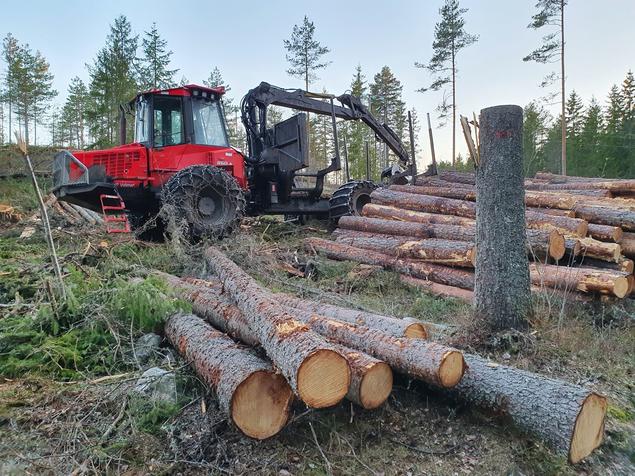- Deputy Director / Research Director Climate and Energy+47 97540217

EU climate policy will have great significance for Norwegian climate, energy, forestry, and land-use policy in the years leading up to 2030 and beyond. Conflicts and trade-offs between climate, energy, and nature considerations are challenges that we will increasingly have to deal with.
The ClimaLand project will investigate trade-offs between policy goals, governance levels, and sector interests, and seek to identify how to design more coherent climate and land-use policies. An important objective is to investigate how conflicting policy goals can be handled and various considerations and land-use interests balanced.
The point of departure for ClimaLand is an examination of the EU Fit for 55 package and its policy implications for Norway. This is followed by a cross-sectoral examination of the biggest sources of Norwegian Land Use, Land-Use Change and Forestry (LULUCF) emissions sources and the most important drivers of these, providing the basis for in-depth studies of potential synergies and trade-offs between policy goals, -levels and sector interests.
The other policy areas examined are:
i) the potential for increasing the forest sink capacity in the short-, medium- and long-term and how forest owners as key actors can affect this capacity,
ii) the Norwegian ban on developing peatlands and its implications for land use, and
iii) renewable energy developments and implications for land use.
Based on these studies, ClimaLand will produce new, interdisciplinary knowledge about how EU climate policy affects land-use in Norway, and how Norway can achieve its 2030 climate targets whilst managing trade-offs between policy goals, -levels, and sector interests.
Project period: 2023-2027
FNI PROJECT LEADER
FNI PARTICIPANTS
- Head of Communications+47 97182523
- Research Professor+47 41277416
- Deputy Director / Research Director Climate and Energy+47 97540217
- Research Professor+47 47477405
- Research Professor+47 92016644
- Junior Researcher+47 46481387
- CICERO Centre for Climate Research
- NIBIO
- Frisch Centre for Economic Research
- Norwegian Environment Agency (Miljødirektoratet)
- Norwegian Water Resources and Energy Directorate (NVE)
- Norwegian Agriculture Agency (Landbruksdirektoratet)
- The Norwegian Forest Owners’ Federation (Norges Skogeierforbund)
- NORSKOG
- Nye Veier
- Sabima
- Research Council of Norway
PEER-REVIEWED ARTICLES AND CHAPTERS
-
Policy Analysis, published online 30.06.2024, 21 p. DOI: 10.1111/1758-5899.13401
-
Forest Policy and Economics, Vol 166, published online 14.06.2024, 9 p.
OTHER PUBLICATIONS
-
Aftenposten, May 27, 2024. In Norwegian.
-
Aftenposten, August 11, 2023. In Norwegian.
-
Dagens Næringsliv, June 22, 2023. In Norwegian.
-
Kommunal rapport, June 2, 2023. In Norwegian.
-
Aftenposten, May 22, 2023. In Norwegian.
-
Aftenposten, March 23, 2023. In Norwegian.
RELATED RESEARCH AREA(S)
IN MEDIA
-
Frykter dagens vindkraftpolitikk kan skade natur og strømproduksjon (Concerns Over Wind Power Policy Impact on Nature and Energy)
NRK, March 25, 2024. In Norwegian.
-
Forsker kritiserer vindkraftpolitikk (Researcher criticizes wind power policy)
NRK Innlandet (radio), March 18, 2024. In Norwegian.
-
Brei støtte til aleinefest-kommentar (Municipal Norway Meets Nature Management Critique)
NRK, February 21, 2024. In Norwegian.
-
Sinne etter påstand om «heime aleine-fest» (Anger Following Allegations of 'Home Alone' Party)
NRK, February 16, 2024. In Norwegian.
-
Staten vil forby å byggje i myr (Government Proposes Ban on Construction in Wetlands)
NRK Vestland, December 4, 2023. In Norwegian.
-
Full klimaklinsj mellom Stortinget og regjeringa (Climate clash between parliament and government)
NRK Vestland, November 6, 2023. In Norwegian.
-
0,8 prosent utslippskutt i fjor: – Dagens klimaminister har samme problem som Gro i «Makta» (Norway Cut Greenhouse Gas Emissions by 0.8% Last Year)
NRK Vestland, November 3, 2023. In Norwegian.
-
Kutt i klimautslipp på Melkøya kan gi økt utslipp andre steder (Melkøya Emission Cuts Could Lead to Increased Emissions Elsewhere)
Aftenposten/E24, August 30, 2023. In Norwegian.
-
– Elektrifisering av Melkøya er nedbetalt på to år ('Electrification of Melkøya Pays Off in Two Years')
Teknisk Ukeblad, August 16, 2023. In Norwegian.
-
Regjeringen foreslår elektrifisering av Melkøya (Government Proposes Electrification of Melkøya)
NRK Nordland (TV), August 8, 2023. In Norwegian.
-
Elektrifisering av Melkøya (Electrification of Melkøya)
NRK Nordland (radio), August 8, 2023. In Norwegian.
-
Klimagassutslipp på stedet hvil (Greenhouse gas emissions not decreasing)
NRK Dagsnytt Atten (TV/radio), June 8, 2023. In Norwegian.
-
Varsel om 50 solparkar skaper bråk (Notice of 50 solar parks causes a stir)
NRK, May 14, 2023. In Norwegian.
